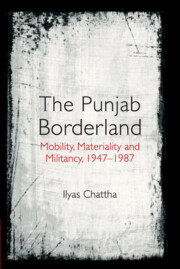Book contents
- Frontmatter
- Dedication
- Contents
- List of Figures
- List of Tables
- Preface and Acknowledgements
- Note on Transliteration
- List of Abbreviations
- Introduction
- 1 Making of the Border
- 2 Cross-Border Flows
- 3 Illicit Cities: Contraband Trade between Lahore and Amritsar
- 4 Illicit Global Gold Trade and Wagah–Attari Crossing
- 5 The Making of Contraband Culture: People and Poetics
- 6 The Regulation of Cross-Border Flows and State Patronage
- 7 Guns, Drugs and the End of the ‘Good Old Days’
- Conclusion: Between Open and Closed Borders
- Glossary
- Appendix
- Bibliography
- Index
2 - Cross-Border Flows
Published online by Cambridge University Press: 30 November 2021
- Frontmatter
- Dedication
- Contents
- List of Figures
- List of Tables
- Preface and Acknowledgements
- Note on Transliteration
- List of Abbreviations
- Introduction
- 1 Making of the Border
- 2 Cross-Border Flows
- 3 Illicit Cities: Contraband Trade between Lahore and Amritsar
- 4 Illicit Global Gold Trade and Wagah–Attari Crossing
- 5 The Making of Contraband Culture: People and Poetics
- 6 The Regulation of Cross-Border Flows and State Patronage
- 7 Guns, Drugs and the End of the ‘Good Old Days’
- Conclusion: Between Open and Closed Borders
- Glossary
- Appendix
- Bibliography
- Index
Summary
What and who moved across the Punjab border? Broadly, border flows could be divided into ‘legal’ and ‘illegal’. In certain cases, the ‘illegal’ movement was significant when compared with the limited ‘legal’ counterpart, especially in terms of trade and people. This chapter looks at the cross-border exchanges of people and commodities and investigates the local actions that transgressed the imposition of state authority at the border. It reveals the sheer scale of mobilities across the border, explaining the pre-partition continuities and postcolonial porosity of the border. Did the Punjabi borderlanders believe in the new international boundary? Did their movements threaten the authority of the state? Did they bind the divided region together, creating a ‘borderland’ relationship between both sides of Punjab?
Much scholarly work on borderland studies has identified different typologies of cross-border interplays that could be either a fount of affability or a perennial source of contention, depending on the landscape of borders the neighbouring states share. Along the Punjab borderland, border interactions could be categorised as what Momoh has termed as ‘maximal borderlands’ where indigenous populations across the borders have shared ethnic, cultural, linguistic and ancestral inheritance. These affinities, in the case of Punjab, helped in maintaining relations across the borderland and resulted in cross-border interactions, regardless of governments of India's and Pakistan's different political ideologies at the centre and the preventive laws at the border. Punjab's 550-kilometre-long boundary had given shape to social and economic intersections at the ‘twin’ cities—Gurdaspur–Sialkot, Lahore–Amritsar and Kasur–Ferozepur—because of their long history of trade and communication networks. In addition to these cities, numerous other small towns would serve as mandi (market) and retailing centres. Locals spoke Punjabi and agriculture remained their primary occupation, and the villagers were mostly farmers, who still engaged in the barter system as well as resembled each other in methods of housing and patterns of agriculture. Momoh argues the spatial limit and extent of a ‘maximal borderland’ depends on the area occupied by residents on each side of the boundary. In terms of an effective patrol of boundaries, ‘maximal borderlands’ with varied modes of contact—physical or emotional—among borderland residents have proved very difficult for the state because border citizens have not been directly co-opted into the official scheme of things.
- Type
- Chapter
- Information
- The Punjab BorderlandMobility, Materiality and Militancy, 1947–1987, pp. 59 - 91Publisher: Cambridge University PressPrint publication year: 2022



